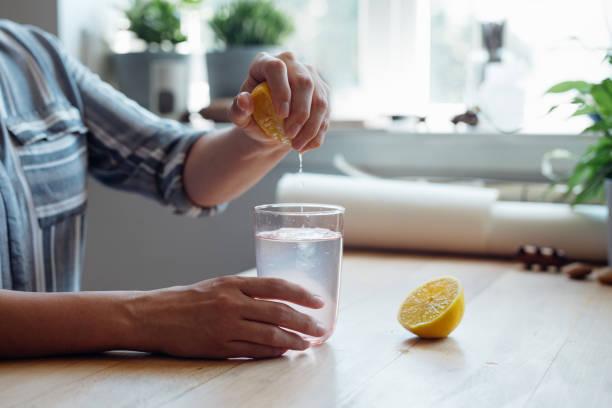How Long It Takes to Pass a Kidney Stone + Treatment Options
What to expect when passing a kidney stone, including how long it takes and common symptoms
Kidney stones are small, solid masses that develop in the kidneys. What these little mineral lumps lack in size, they make up for in the discomfort they cause. Many smaller kidney stones pass on their own. Larger stones may get caught in the ureter, causing severe pain and potentially dangerous complications. A larger stone may also pass on its own or require surgery to remove it.
If you’ve ever had a kidney stone, you know how awful it can be. But how long it takes for a stone to pass varies. In this article, we’ll detail how kidney stones happen, the symptoms they cause, and how long it takes for them to pass.
How long does it take to pass a kidney stone?
The time it takes for a kidney stone to pass depends on the size of the stone, just as the likelihood of that stone actually passing depends upon its size and location; smaller and more distal stones are more likely to pass without intervention.
Small kidney stones (smaller than 4 mm) pass on their own 80% of the time. It usually takes about 31 days for these smaller stones to pass.
Stones between 4-6 mm may require treatment to pass. This size of stone will pass on its own about 60% of the time, but it may take up to 45 days for it to pass.
Only about 20% of stones larger than 6 mm pass on their own, and it could take 60 days or more to do so. Large stones usually require medical treatment for removal.
How do you get kidney stones?
There is no single cause of kidney stones. Men are more likely to get kidney stones than women. Also, a family history of kidney stones increases the risk that you will have kidney stones yourself.
Other risk factors for the formation of kidney stones include:
- Not drinking enough fluids
- Eating a lot of animal protein
- Consuming too much vitamin D
- Having a blockage in the urinary tract
- Having a metabolic disorder
- Having obesity
- Having an inflammatory bowel disease
- Having gout
This is not a complete list of all the causes of kidney stones, although these are the most common. Men and women of any age can develop kidney stones.
How do kidney stones form?
Kidney stones are crystal-like masses that form in the kidneys made of minerals in the urine. High levels of a mineral in the urine may cause that mineral to build up and form a mass. The mass hardens and becomes a kidney stone.
Once formed, kidney stones will pass through the bladder into the ureter. It’s here where they really cause problems. The ureter is a small tube that guides urine flow from the kidneys to the bladder. When a kidney stone gets stuck in the ureter, it can cause blockage, making it harder for urine to pass.
Blockage in the urinary tract can cause complications like urinary tract infections (UTIs) and kidney disease. The risk of these complications is why passing or removing a kidney stone from the urinary tract is critical when one develops.
Are there different types of kidney stones?
Yes. There are four primary types of kidney stones that are classified by the chemical or mineral that has built up.
The four main types of kidney stones are:
Calcium Stones: Calcium oxalate and calcium phosphate stones are two of the most common types of kidney stones. When extra calcium is not flushed from the body through urine, it can build up in the kidneys, causing stones.
Uric acid stones: Uric acid stones are made of excess acid in the urine. Eating a lot of fish or meat—especially organ meat—can lead to excessive acid levels in the urine.
Struvite stones: Struvite stones are made of chemicals released due to a bacterial infection. These stones are often a side effect of a urinary tract infection. An infection raises the pH levels of urine, which can lead to the formation of stones.
Cystine stones: A cystine stone is a type of kidney stone formed from the buildup of cystine, an amino acid, in the urine. Cystine is filtered by the kidneys and released in the urine. In individuals with a genetic disorder called cystinuria, the kidneys are unable to properly reabsorb cystine, leading to its accumulation and eventual formation of stones.
How are kidney stones treated?
Smaller kidney stones often pass on their own through the urethra via the urine flow. Larger stones may require targeted medical intervention.
Medication
Depending on the size of the stone, your healthcare provider may prescribe medication to help ease your pain and relax the muscles around the bladder. This can make it easier to pass a kidney stone.
For pain, most healthcare providers prescribe an OTC pain medication such as ibuprofen. In hospital settings, a more advanced form of narcotic may need to be used.
If your provider thinks you can pass the stone without surgery, they may prescribe an alpha-blocker like tamsulosin or a calcium-channel blocker like nifedipine. These drugs are commonly used to treat high blood pressure. They work by preventing the release of certain hormones that cause muscles and blood vessels to tighten. Relaxing the muscles around the bladder makes it easier to pass a kidney stone. These drugs also prevent painful ureter spasms, which reduce pain.
Shock wave lithotripsy
Lithotripsy uses high-energy sound waves to break a large stone into smaller pieces. Smaller stones are easier to pass through the urethra. This procedure often requires hospitalization for a few days but is non-invasive.
Surgery
Stones larger than 5-6 mm may require surgical treatment. These procedures are detailed below.
Ureteroscopy: Ureteroscopy is a minimally invasive procedure. During this procedure, a small instrument called a ureteroscope is inserted into the urethra and up into the ureter and kidneys. From here, the instrument can retrieve any stones in a small basket or break up larger stones with a laser.
Percutaneous nephrolithotomy: During this procedure, an endoscope is inserted directly into the kidney through a small incision in the back. The stones are then broken into smaller pieces with a laser or ultrasound probe and removed through the incision. After this is done, the surgeon will place a stent—a tiny flexible tube—in the urinary tract to help urine flow and flush out any leftover bits of stone. You will need to be hospitalized for several days after this procedure.
You can help prevent kidney stones by drinking plenty of fluids. However, if you think you might have a kidney stone, you should seek medical attention right away. Catching a kidney stone early can preserve your kidney function while preventing the stone from getting too big. If you are in severe pain and are experiencing nausea or vomiting, go to the nearest emergency room immediately.
Related posts

Kidney stones are uncomfortable and painful. Learn more about natural and medical treatment options to help pass kidney stones as quickly as possible.

If left untreated, a kidney infection can cause serious health problems, even death. Because of this, a kidney infection requires urgent medical attention.

In this blog article, we will detail some of the most common causes of lower right back pain and how to treat the root of the problem.

Learn about the causes and symptoms of lower left side back pain, including issues with internal organs, and explore treatment options. Discover when this pain may indicate an emergency and how to find affordable care from home.

Lower abdominal pain is one of the most common medical complaints among females of all ages. Sometimes referred to as pelvic pain, these aches and cramps generally occur below the belly button and above the pelvic bone.

In observance of Bladder Health Awareness Month, we’ve compiled a list of easy-to-use tips to keep your bladder in tip-top shape.

Urinary tract infections (UTIs) affect nearly 50% of all women. Anywhere from 12-20% of men get one at some point. Luckily, there are a few steps you can take to prevent UTIs from occurring.

Osteoporosis is a bone disease that increases the risk of broken bones. Learn more about common risk factors for osteoporosis and how to treat the condition.

We asked Dr. Justin Houman – a urologist in Los Angeles – to help us sort out the hype and pin down the real benefits of drinking lemon water.
